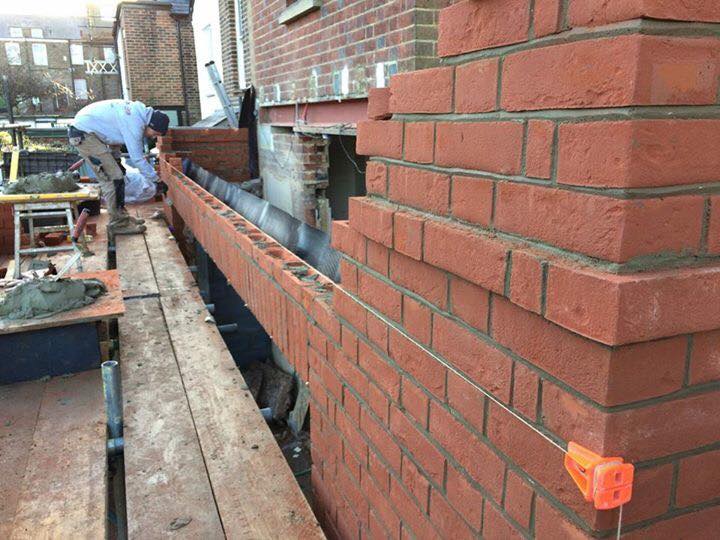How Do Bricklayers Take Care Of Their Hands?
We use our hands a lot and it isn’t uncommon for those with demanding manual jobs to develop sore skin, cuts and grazes as well as having reactions to certain products and chemicals. When it comes to bricklaying, you could be forgiven for thinking that there isn’t really a need for gloves. After all, the bricklayer is only picking up a humble brick, which isn’t the scariest object in the world.
But when you think about it more deeply, you’ll soon realise that bricklaying can take a serious toll on the hands so it is important to protect them. While you might not think of a bricklayer as being someone who’d regularly head to the salon for a manicure, these people do need to think about how they look after themselves. So, how do bricklayers take care of their hands?
One of the most common things that a bricklayer can do to take care of his or her hands is to wear a pair of good quality gloves when they are working. These gloves offer protection from the bricks themselves as well as protecting the hands from the elements, especially in colder weather.
If you are considering becoming a bricklayer, then it is vital that you think about investing in a good quality pair of gloves. There’s no use in scrimping and buying a cheap pair as these will quickly wear down with repeated handling of masonry leaving your hands not nearly as protected as you would like.
Why Do Bricklayers Wear Gloves When Working?
The skin on your hands is pretty resilient and it can handle quite a lot but there is a limit to everything and it’s always a good idea to provide your hands with the best protection, especially when you are working.
Bricklayers spend between six and eight hours every day handling bricks. Alright, they might not seem like the most dangerous things on first thought but when you consider their rough surface, it’s not difficult to see why repeated handling could irritate the hands.
Moreover, there are other things that your hands will be exposed to as a bricklayer; primarily mortars which again doesn’t seem like the most offensive substance. But consider the fact that mortar contains lime and you’ll quickly see why you wouldn’t want this on your hands more than necessary.
Lime can cause serious irritation to the skin and result in things like contact dermatitis. If you are lucky, the only effect on the skin from bricklaying without gloves would be that the skin hardens and becomes calloused or rough. While this isn’t, in itself, dangerous, it isn’t very pleasant.
Finally, if you are working outdoors, your hands are immediately exposed to the elements and this means that the skin will suffer. This isn’t too much of a problem during the summer months (but don’t forget your sunscreen) however, in the winter, the cold, moist air can wreak havoc with your skin. Furthermore, when the hands become cold, it becomes much more difficult for them to function making it tricky to properly grip your equipment.
Wearing a simple pair of gloves for bricklaying will give your hands the protection they deserve, keeping them soft and well looked after.
What Gloves Do Bricklayers Use?
Bricklayers must wear gloves that have everything they need to stand up to challenges and demands of such a hands-on job. The gloves must be comfortable and resistant and it is always best to choose a pair that are a little more expensive and high quality than risk a cheaper pair falling apart after the first few uses.
Bricklaying gloves must have a good grip because nobody wants to lose their grasp on the bricks and drop them, potentially causing an injury. So the type of gloves that bricklayers tend to use feature a heavy grip pattern across the palm and the fingers, usually made from rubber or polyurethane.
Moreover, the best gloves for bricklaying are super durable and are made from high quality materials that are resistant to tears and abrasion. What’s more, many of these types of bricklaying gloves are designed to offer much greater protection and are what is known as cut-resistant. The material is so strong that handling sharp or rough objects doesn’t pose a risk to the skin. In addition to this, these gloves will prevent any debris or material from getting inside, further protecting the hands.
Some bricklaying gloves go one step further and are lined with Kevlar which is ideal for people who are doing very demanding work or where there may be an increased risk of impact.
In the winter, a bricklayer may decide to purchase thermal gloves which ensure the hands are kept warm and able to function correctly. There are several different pairs of thermal gloves that are also waterproof and so are ideal for use in wet weather. That said, we wouldn’t recommend laying bricks in anything heavier than light drizzle as this will affect the quality of the finish.
Another Interesting Article : How Many Bricks Can A Bricklayer Lay In An Hour
Conclusion
Bricklaying is very demanding work and the hands are right in the thick of it. Without adequate protection, the bricklayer may develop conditions such as calluses or contact dermatitis. Not to mention the potential for cuts and scrapes due to the abrasive nature of the bricks. It’s important to practice good hand care and for the brickie, this begins with wearing a good pair of bricklaying gloves that offer water resistance, warmth, good grip and adequate protection.
